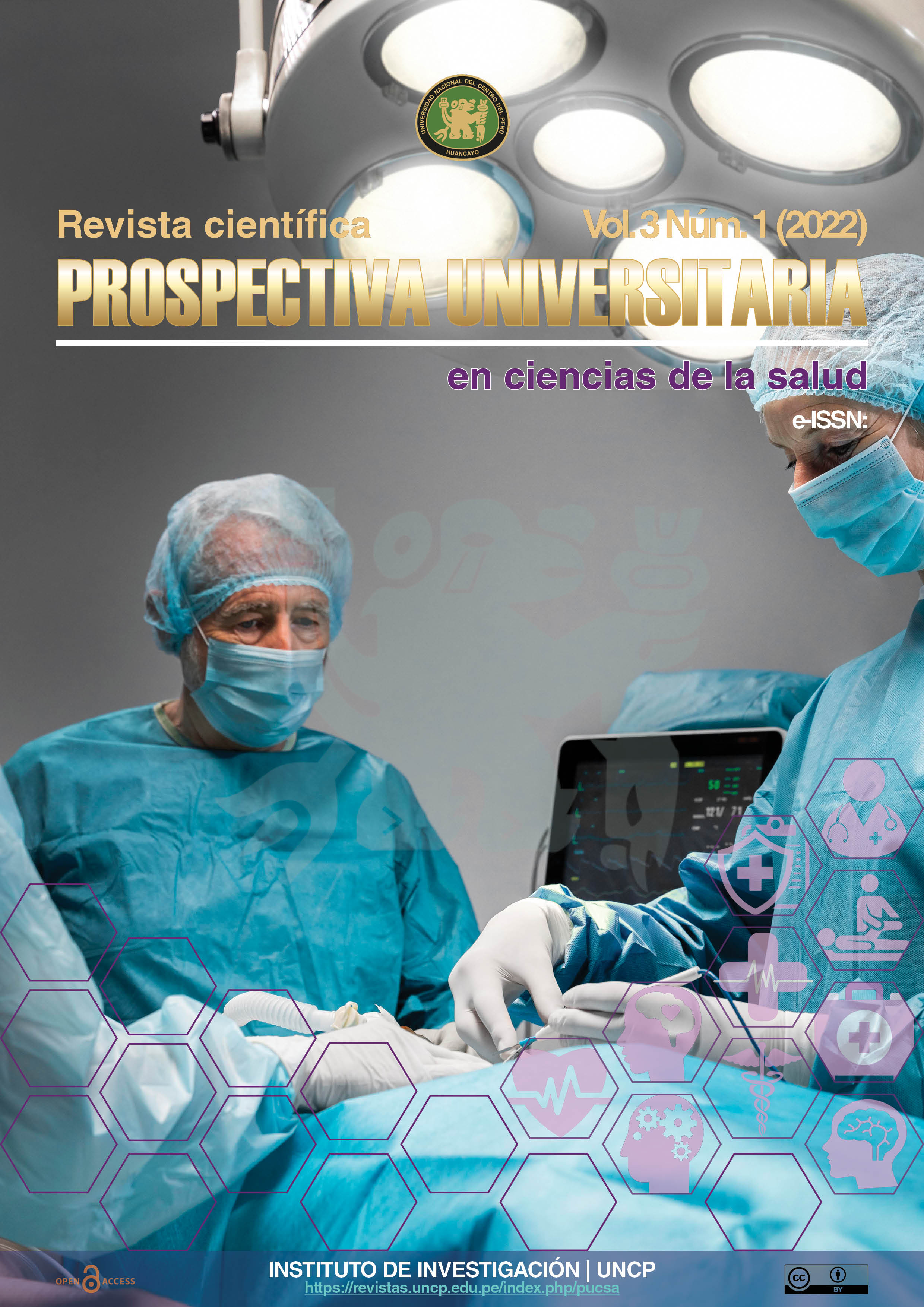Efecto de la dieta DASH en el control de la hipertensión arterial en docentes universitarios
Palabras clave:
Dieta DASH, Hipertensión arterial, Docentes universitariosResumen
La investigación buscó determinar la eficacia de la dieta DASH en el control de la hipertensión arterial en docentes universitarios. El estudio fue de tipo aplicado con diseño cuasi experimental. La técnica de muestreo fue no probabilística y no aleatorio por conveniencia, se incluyeron 60 docentes con hipertensión arterial elevada, estadio 1, estadío 2 y estadío 3, de los cuales 30 formaron parte del grupo experimental y 30 del grupo control, previa aceptación y firma del consentimiento informado. El impacto de la intervención se evaluó con base a la eficacia de la Dieta Dash, presión arterial sistólica y diastólica y por los valores de triglicéridos, colesterol, bilirrubina como creatinina, en relación al inicio, a los tres y seis meses paralela a la intervención dietética. Se utilizó estadística descriptiva e inferencial, para el calculo de la t de Student para grupos apareados. Los resultados evidenciaron la eficacia de la dieta DASH en el control de la hipertensión arterial con reducción de triglicéridos en un 30%, colesterol (27%) y disminución del nivel de presión arterial, en todos los niveles encontrados en un 33%, posterior a la intervención dietética (p < 0.05).
Descargas
Referencias
Akita, S., Sacks, F. M., Svetkey, L. P., Conlin, P. R., & Kimura, G. (2003). Effects of the Dietary Approaches to Stop Hypertension (DASH) Diet on the Pressure-Natriuresis Relationship. Hypertension, 42(1), 8-13. https://doi.org/10.1161/01.HYP.0000074668.08704.6E
Arellano, A., Contreras, F., & Patiño, P. (2012). Intervención educativa en relación a la presión arterial elevada y los factores de riesgo modificables. Municipio Carrizal, estado Bolivariano de Miranda. 201. 7.
Chow, C. K. (2013). Prevalence, Awareness, Treatment, and Control of Hypertension in Rural and Urban Communities in High-, Middle-, and Low-Income Countries. JAMA, 310(9), 959. https://doi.org/10.1001/jama.2013.184182 Esquivel, V., & Jiménez, M. (2010). Aspectos nutricionales en la prevención y tratamiento de la hipertensión arterial. Rev. costarric. salud pública, 42-47. Consultado el 26 de diciembre de 2023, desde http://www.scielo.sa.cr/ scielo.php?script=sci_arttext&pid=S1409-14292010000100008&lng=pt&nrm=iso&tlng=es
INEI. (2018). Situación de la población adulta mayor (Informe técnico No 01-2018). Instituto Nacional de Estadística e Informática. https://www.inei.gob.pe/media/MenuRecursivo/boletines/01informe-tecnico-n01_adulto- oct-nov-dic2017.pdf
Jones, N. R. V., Forouhi, N. G., Khaw, K.-T., Wareham, N. J., & Monsivais, P. (2018). Accordance to the Dietary Approaches to Stop Hypertension diet pattern and cardiovascular disease in a British, population-based cohort. European Journal of Epidemiology, 33(2), 235-244. https://doi.org/10.1007/s10654-017-0354-8
Kearney, P. M., Whelton, M., Reynolds, K., Muntner, P., Whelton, P. K., & He, J. (2005). Global burden of hypertension: Analysis of worldwide data. The Lancet, 365(9455), 217-223. https : / / doi . org / 10 . 1016 / S0140 - 6736(05)17741-1
Maicas, C., Lázaro, E., Alcalá, J., Hernández, P., & Rodríguez, L. (2003). Etiología y Fisiopatología de La Hipertensión Arterial Esencial [magazine]. Monocardio, 5(3), 141-160. https://www.enfermeriaaps.com/portal/download/ HIPERTENSION % 20ARTERIAL / Hipertension % 20fisiopatologia % 20Servicio % 20de % 20Cardiologia .
%20Hospital%20Virgen%20de%20la%20Salud.%20Toledo.2003.pdf
Mellen, P. B., Palla, S. L., Goff, D. C., & Bonds, D. E. (2004). Prevalence of nutrition and exercise counseling for patients with hypertension: United states, 1999 to 2000. Journal of General Internal Medicine, 19(9), 917-924. https://doi.org/10.1111/j.1525-1497.2004.30355.x
Morales, M. S. (2020, 12 de enero). Asociación entre el consumo de frutas y verduras con la prevalencia de hipertensión arterial en adultos peruanos en el año 2017. https://repositorioacademico.upc.edu.pe/handle/10757/ 648783
Accepted: 2020-02-20T15:25:38Z.
Zhou, B., Bentham, J., Di Cesare, M., Bixby, H., Danaei, G., Cowan, M. J., Paciorek, C. J., Singh, G., Hajifathalian, K., Bennett, J. E., Taddei, C., Bilano, V., Carrillo-Larco, R. M., Djalalinia, S., Khatibzadeh, S., Lugero, C., Peykari, N., Zhang, W. Z., Lu, Y., … Zuñiga Cisneros, J. (2017). Worldwide trends in blood pressure from 1975 to 2015: A pooled analysis of 1479 population-based measurement studies with 19ꞏ1 million participants. The Lancet, 389(10064), 37-55. https://doi.org/10.1016/S0140-6736(16)31919-5
Descargas
Publicado
Número
Sección
Licencia
Derechos de autor 2024 María Asela Ortega Salcedo

Esta obra está bajo una licencia internacional Creative Commons Atribución 4.0.
![IconJournalPUCSA [ESP] by Edgar Julian-Laime®](https://revistas.uncp.edu.pe/public/journals/29/pageHeaderLogoImage_es.png)







